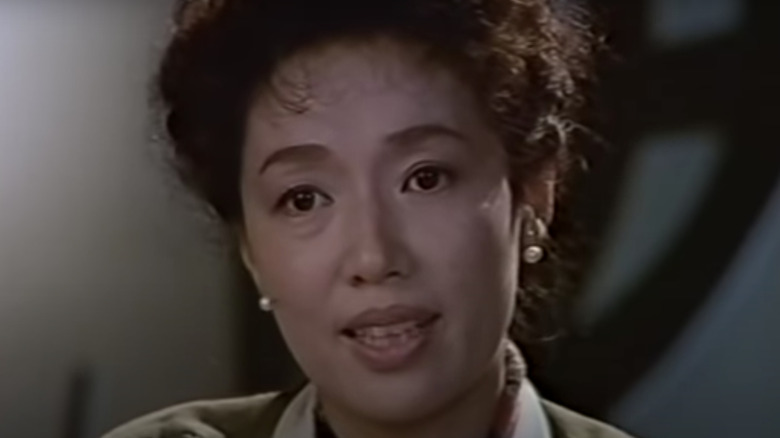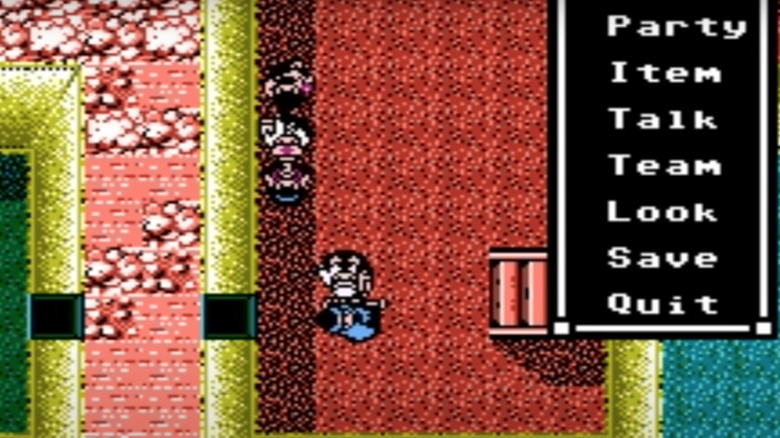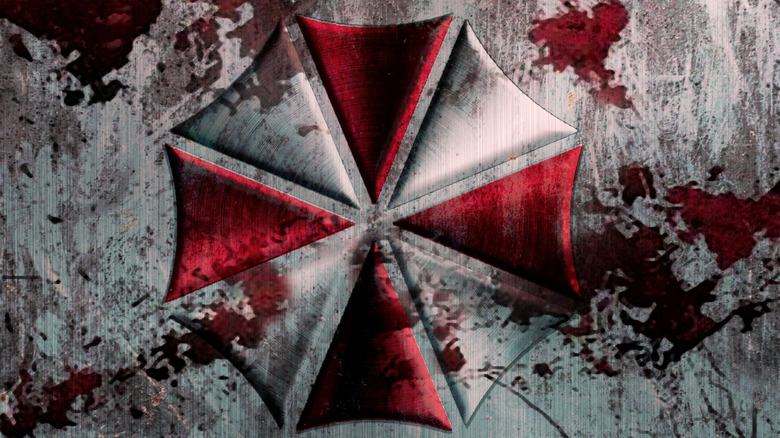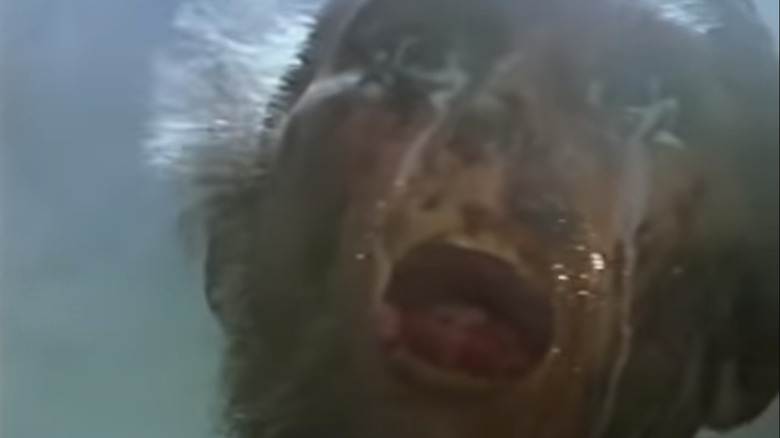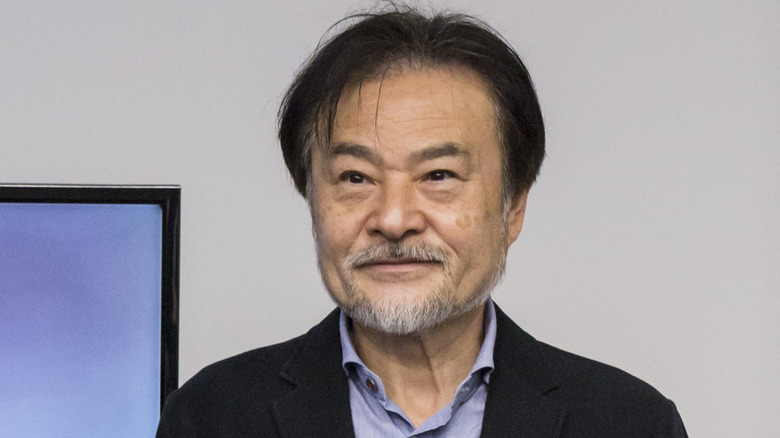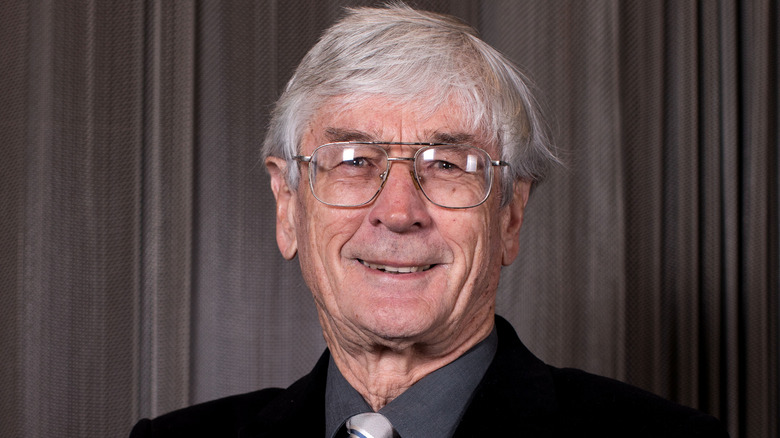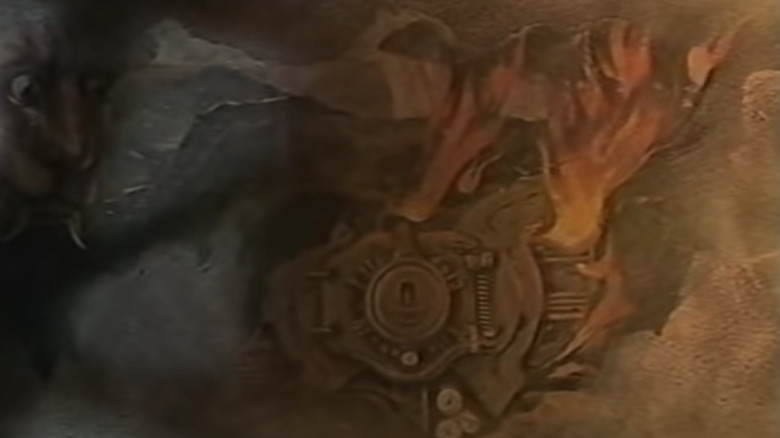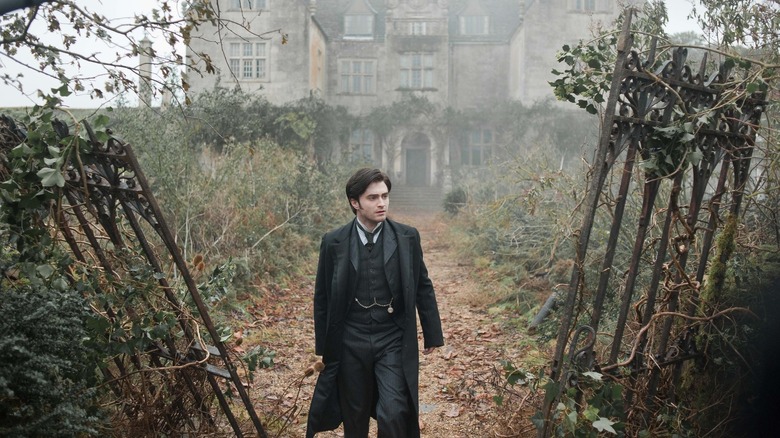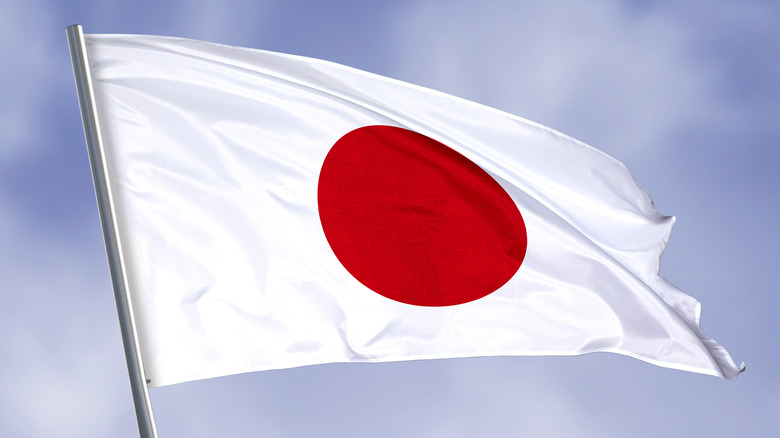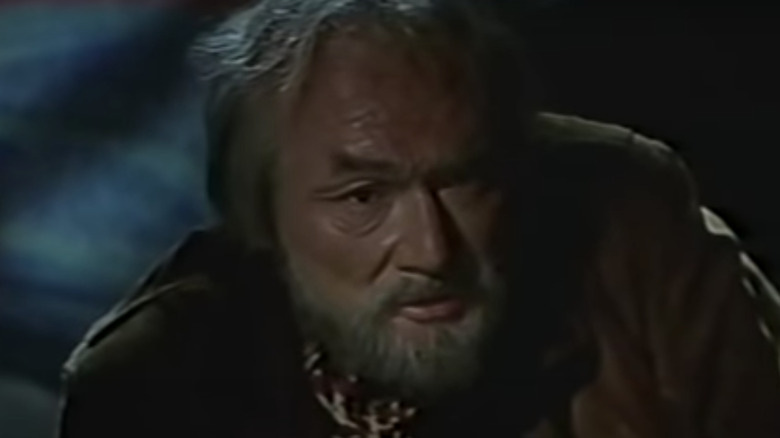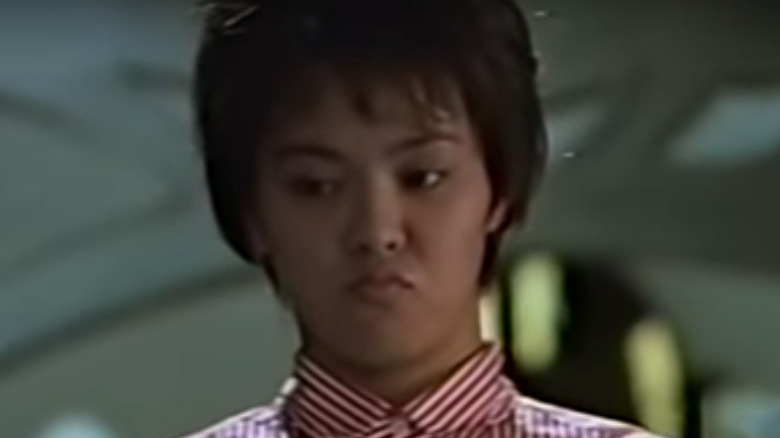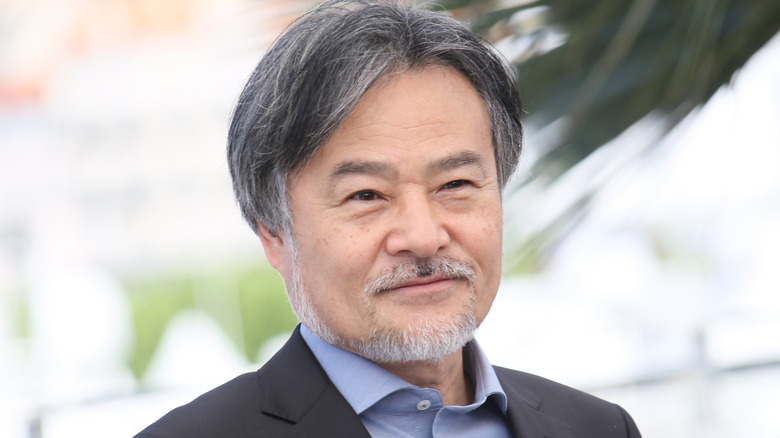Sweet Home: 12 Facts About The Obscure 1989 Japanese Horror Film That Inspired Resident Evil
1989's "Sweet Home" is a Japanese ghost story that follows a documentary crew shooting a profile on a painter whose entire family died several years earlier. They make their way into his old home, which is an abandoned mansion full of secrets. While working on the documentary and exploring the mansion, they uncover the tragic history of how the painter's wife accidentally killed their daughter and went mad as a result. Ever since, her ghost has haunted the mansion and inhabited the shadows within.
Under normal circumstances, it would be easy for the run-of-the mill "Sweet Home" to blend into the sea of Japanese ghost films that were booming in popularity around this time period. But perhaps the best reason worth remembering this film more than 30 years later is that it had a hand in inspiring the massively-successful "Resident Evil" franchise.
"Sweet Home" is decidedly mainstream and commercial in its execution, but it does have a couple elements that help it stand out. The special effects showstopper sequences are eye-catching and crowd-pleasing, the film develops its own peculiar mythology as it moves along that keeps the proceedings compelling, and the legacy left behind by "Sweet Home" is far larger than an obscure, semi-forgotten little ghost movie ought to have. The behind-the-scenes production of this horror film was unique in more ways than one — as is its legacy.
The film was made as a video game at the same time
Long before the first "Resident Evil" game was released in 1996, "Sweet Home" was laid the groundwork. The movie and video game versions of "Sweet Home" were both released in 1989, on the exact same day. The two versions were developed alongside each other with some disagreement over which one started first. At any rate, the film has a decidedly more video-gamey feel than the vast majority of movies at the time.
The "Sweet Home" video game was released on the Famicom console, which is essentially the Japanese equivalent of the NES. Players take control of all five of the film's main characters at different points — each with a unique skill — as they make their way through the painter's mansion and try to escape. The gameplay consists primarily of turn-based combat, puzzle solving, and exploration. The game features a much wider range of enemy types than can be seen in the film, including everything from suits of armor to skeletons. According to Bloody Disgusting, the game was never released outside of Japan. Although the project was held back by the technical limitations of the era, it was considered quite innovative and helped push the envelope forward in the burgeoning horror game genre.
The Resident Evil Connection
The "Sweet Home" film (and even more so, its corresponding video game) can be counted as a direct ancestor of the entire "Resident Evil" franchise, which has eclipsed its originator in popularity and reach several times over.
In truth, calling "Sweet Home" the inspiration for "Resident Evil" might actually be an understatement. As explained by Goomba Stomp in a retrospective on "Resident Evil," the project was first born as a direct remake of the "Sweet Home" Famicom game. Tokuro Fujiwara created the original game on the limited tech of 1989. After major advancements had been made on video game hardware throughout the early '90s, Fujiwara wanted to create a 3D remake of "Sweet Home."
When Shinji Mikami was assigned to lead the remake, he began drifting further and further away from the source material. He wound up pulling inspiration from the 1992 horror game "Alone in the Dark" as well as the zombie films of George A. Romero, making the key enemies of the game zombies. As development continued, it stopped being considered a remake and took on the new title of "Biohazard" in some parts of the world and "Resident Evil" in others (per Kotaku). Even still, traces of the "Sweet Home" DNA can still be felt. The way characters explore a large mansion, need to get past locked doors, examine giant wall murals, and utilize secret passages and hidden areas can be seen in both versions of "Sweet Home" and throughout "Resident Evil."
The soundtrack was connected to the video game industry too
The connections between "Sweet Home" and the video game industry run even deeper than its own direct adaptation and "Resident Evil." The original soundtrack of the film was composed by Japanese musician Masaya Matsuura. As odd as it sounds, "Sweet Home" was the only film he ever worked on. Matsuura is far better known in the music world than in the film industry. He has released several albums as both a solo artist and as one half of the J-pop duo known as Psy-S alongside Mami Yasunori.
Even more so than in the music industry, Matsuura might be most beloved in the world of video games. He founded the video game publishing company NanaOn-Sha in 1993 and has run it ever since. For Matsuura, music and video games are intrinsically linked. His first game was the cult classic "PaRappa the Rapper," which many consider to be the first modern rhythm game. NanaOn-Sha continued this success with a sequel, a spin-off in the form of "Um Jammer Lammy," the start of a new music game series with "Vib-Ribbon," and more. Matsuura's work on the horror film "Sweet Home" bears little resemblance to the oddball, kid-friendly music in his video games, but he did he make a surprise return to the horror genre with NanaOn-Sha's 2012 release "Haunt."
The director disowned the film
"Sweet Home" was directed by Kiyoshi Kurosawa in the early stage of his career. Kurosawa would go on to find major international critical success later on in his career, but was still finding his footing in the 1980s. In the beginning of his career, Kurosawa worked his way up as a director of pinku eiga AKA "pink films," which were a type of popular Japanese movie that included elements of soft-core pornography, such as "Kandagawa Pervert Wars."
These days, he works at a dramatically different level, and is a returning favorite of the prestigious Cannes Film Festival after having been winning several awards over the years. His later work is a world apart from "Sweet Home." He continued working frequently in the horror genre, but his filmmaking style would become defined by subtlety, restraint, and thought-provoking themes, none of which can be found in the over-the-top, bombastic "Sweet Home."
It should come as no surprise, then, that Kurosawa disowned this early effort. As reported by Japanese cinema website Midnight Eye, "According to director Kiyoshi Kurosawa, all the films he made before 1997's 'Cure' are flawed. In the literal sense, this goes for his very entertaining 1989 haunted house film 'Sweet Home.'" Though Kurosawa wrote and directed the film, ownership of "Sweet Home" in its final form is often attributed to producer Juzo Itami. Kurosawa and Itami clashed behind the scenes, and Kurosawa was left unsatisfied by the end result.
An American Oscar-winner was flown to Japan to handle the special effects
The biggest set-piece sequences in "Sweet Home" rely heavily on complex special effects. These showstopper moments include a mangled torso crawling along the floor and leaving its legs behind, a corpse in a wheelchair erupting into molten goo, a man's face melting off a la "Raiders of the Lost Ark," and a gigantic ghostly lightning-spewing monster of queen-alien proportions. The execution of these key sequences represented make-or-break moments for the film. Fortunately, the production was willing to seek out the world's best special effects talent.
American special effects artist Dick Smith had built up a sterling reputation after working on world-class films like "The Godfather" and its sequel, "Taxi Driver," "The Deer Hunter," "Marathon Man," "Starman," and most pertinently on gore showcases "The Exorcist" and "Scanners." Smith was riding high off the success of an Oscar win for "Amadeus" when he was asked to fly to Japan to handle the special effects for "Sweet Home." Smith accepted the offer and delivered some incredible results. In the credits, he was listed as "Dikku Sumisu."
The first mural foreshadows the entire film
One subtle touch that some viewers might miss is related to the many murals within "Sweet Home." As they explore the deceased painter's abandoned mansion, the documentary crew uncover a number of frescos painted on the home's walls. These paintings are key to the goals of the documentary crew, but wind up being largely inconsequential to the plot once the supernatural occurrences begin taking place.
The frescos are a bigger part of the "Sweet Home" video game, as there are far more of them and they provide players with important clues. As unlikely as it sounds, the frescos can also provide viewers of the movie with clues as well. The first fresco uncovered by the crew in particular is loaded with foreshadowing. The various images on the mural include a single eye, hair, fire, a baby with a small coffin, and a metal door.
Though seemingly innocuous upon first glance, each one points to a key image that will pop up later in the film. The single eye foreshadows the backstory of the ghost who lost an eye trying to save her daughter. The hair becomes one of the film's repeated creepy visuals. Fire features prominently, as the ghostly shadows can make people burst into flames and the ghost's daughter was killed in a fire. The small coffin is dug up outside the mansion later on and contains the ghost's dead daughter, and the metal door turns out to be the furnace that the daughter was killed inside.
The plot shares a lot in common with The Woman in Black
The plot of this Japanese ghost story bears an awful lot in common with a British one. "Sweet Home" and "The Woman in Black" are both set primarily in abandoned mansions, haunted by the ghosts of mothers whose children died in tragic accidents climaxing with the protagonist digging up the corpse of the ghost's dead child outside and returning it to its rightful place inside the mansion.
The novel "The Woman in Black," written by Susan Hill, was first published in 1983. In a striking coincidence, the first film adaptation of "The Woman in Black" was made as a TV movie and aired on British television the same year "Sweet Home" was released.
It is possible that Kiyoshi Kurosawa pulled some inspiration from the novel when writing the "Sweet Home" screenplay, but it is more likely a simple case of parallel thinking and falling back on touchstones of the genre. "Sweet Home" made no attempt to re-invent the wheel; it is similar to ghost stories like "The Haunting" and "Poltergeist," among others. Kurosawa is an admitted fan of director Tobe Hooper and wrote extensively about "Poltergeist" and Hooper's other films in his 2008 book "My Terrifying History of Cinema."
The ending sequence made use of early CGI
"Sweet Home" features a ton of jaw-dropping practical special effects sequences, courtesy of Dick Smith and his team. The film also uses plenty of optical effects for things like lightning and energy beams, which tend to look more dated and a bit cheesy, but can add to the charm of the film if you go in with the right mindset. Both of these special effects types were commonplace for the time, but "Sweet Home" also made use of a third special effect type that was anything but.
In the 1980s, CGI was still in its infancy, but things were beginning to change by the end of the decade. James Cameron has long been at the cutting edge of VFX, and his film "The Abyss" pushed the form further than ever before and was released the same year as "Sweet Home." Computer generated visuals are used extremely sparingly and only really pop up in a noticeable way in the ending sequence of "Sweet Home." After being reunited with her dead child and transforming into an angelic figure, the ghost rises up into the sky, seemingly ascending to heaven. A simple 3D environment rotates around the ghost as it soars from underground, past the bannisters of the mansion (which is now several floors taller than in the rest of the film) and climbs all the up into the sky, which then cross-fades back to a live-action time-lapse shot of the sky.
The film was never officially released outside of Japan
The biggest factor behind the obscurity of "Sweet Home" today is the film having never received an official release outside of its home country. It enjoyed a standard theatrical release in Japan but wasn't distributed any further, just like it's video-game counterpart. When it came time for home media products, "Sweet Home" was released on VHS and Laserdisc, but again only in Japan.
All these years later, the film has still never made its way abroad in any official capacity; it has never been released on DVD or Blu-ray or even made available to stream on any service, though a VHS rip has appeared on YouTube. Anyone outside of Japan looking to view the film through traditional means will likely have to resort to importing an old physical copy of it. Rare VHS copies of the film typically go for between $100 and $200 on eBay. Laserdisc copies of the film are even rarer, but do exist.
Since these dated formats are the only ways to watch the film in the modern age, the resolution is quite poor. Fans of the movie would undoubtedly be happy if a cleaned up, remastered edition of the film were released on Blu-ray, but the rights are owned by Toho Pictures Inc., who have shown no interest in a re-release.
Sweet Home was the final role of an acclaimed actor and director
Kiyoshi Kurosawa and Jûzô Itami worked together a handful of times over the years. Itami acted in "Bumpkin Soup," which Kurosawa wrote and directed, and Kurosawa acted in "The Funeral," which Itami wrote and directed. After trading off responsibilities on a couple of projects, they joined powers for "Sweet Home," but they ended up butting heads behind the scenes and fighting for creative control.
Itami started out his career as an actor in the 1960s but pivoted to focus on writing, directing, and producing in the '80s. He found success as a director with acclaimed films like "A Taxing Woman" and "Tampopo" and didn't look back. As Midnight Eye puts it, he was, "One of the few filmmakers to have consistent commercial success in Japan throughout the '80s." He decided that his final acting role would be in "Sweet Home," with his past collaborator Kiyoshi Kurosawa. He plays the now-hopelessly-cliché role of the old man who works at the gas station and warns the documentary crew not to go in the haunted house, later on going in to save them.
Everything may have worked out fine if Itami stuck to acting, but he was also the film's "chief executive producer" and seemed to want to take over directing duties from Kurosawa at a certain point. It's worth pointing out that "Sweet Home" is the only film Itami produced that he didn't also write and direct.
The daughter was played by one of Japan's most popular rock stars
One of the most important characters in "Sweet Home" is Emi, the teenage daughter of the documentary director. After the ghost begins picking off the crew one by one, the priority becomes getting Emi out of the house alive. At a certain point, she appears to be dead, but Akiko susses out that it is a test and braves the hallucinated flames and the fury of the ghost to save her.
The role of Emi was played by Nobuko Yamada, who is better known by her stage name Nokko. At the time the film was released, Nokko was at the height of her fame as lead singer of popular pop/rock band Rebecca. The band broke up a couple of years after the release of "Sweet Home," but Nokko went on to have a successful solo career. She gives a solid performance, but "Sweet Home" is the only film in which Nokko ever appeared. Her only other acting roles include an unnamed bit part in the TV show "Kazoku no uta" and a voice role in the animated music short "Toi." The music for "Toi" was made by Masaya Matsuura, the composer of "Sweet Home," which might explain Nokko's involvement in it.
There is a secret director's cut that never saw the light of day
The butting of heads between writer/director Kiyoshi Kurosawa and actor/producer Jûzô Itami behind the scenes led to many changes in the end product. By all accounts, Itami wrested creative control away from Kurosawa by the time the film was locked. As covered by Bloody Disgusting, Itami disagreed with many of Kurosawa's creative decisions and took matters into his own hands. After Kurosawa had finished the film, Itami went back and heavily altered it. His changes included extensive re-editing but he also went so far as to re-shoot scenes without Kurosawa's input and others that weren't in Kurosawa's script. As Midnight Eye put it, Itami was one of the most bankable filmmakers of '80s Japan. The majority of his alterations fell in line with making "Sweet Home" a more crowd-pleasing and commercially viable movie, but came at the expense of Kurosawa's more artistic sensibilities.
These changes are a major part of why Kurosawa disowned the film. His original cut of the movie was never released on home video, so Itami's version is the only one available to watch today. There is really no telling how drastically different Kurosawa's version might be. There is, however, a slim chance that his director's cut could still see the light of day at some point. According to Midnight Eye, the director's cut, "Only exists as a film print in Toho's studio vaults."
